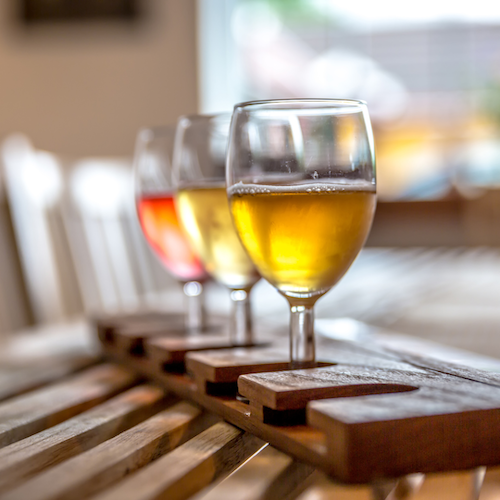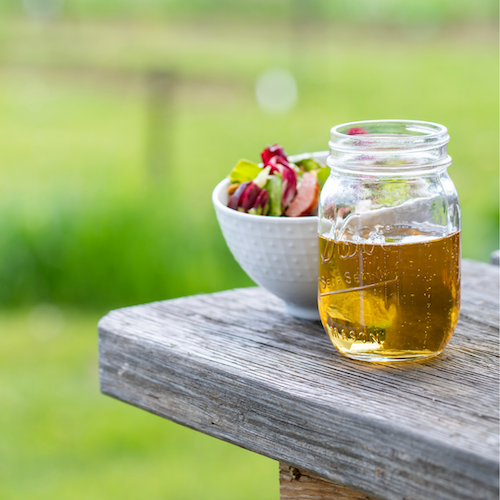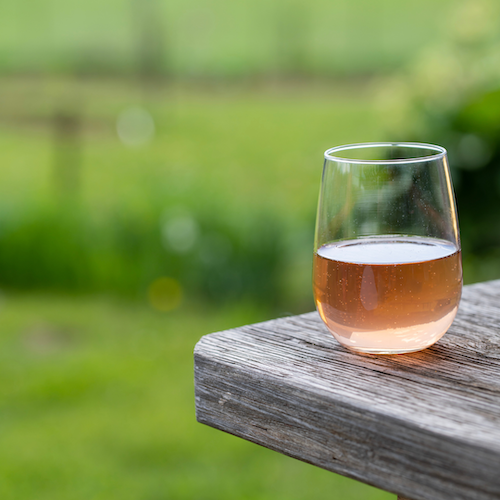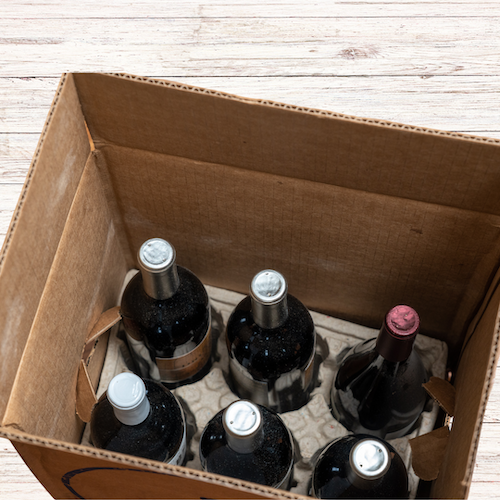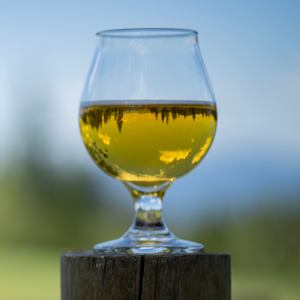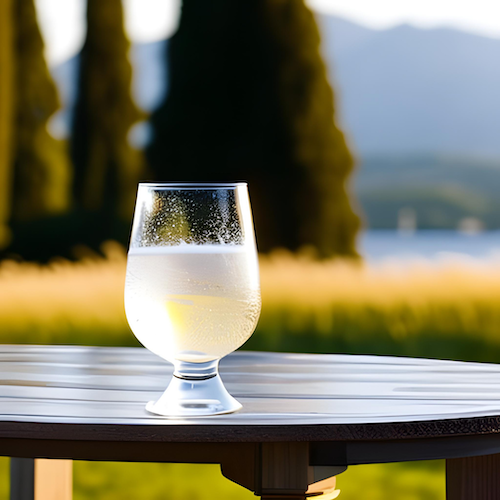Posts by Woodley Smith
Live Sensory Analysis Webinar with Alma Cider

Join our Certified Pommelier™ panel in a live practice sensory webinar on Wednesday, July 26, 2023 from 4:00-6:00 PM Pacific featuring cider from Alma Cider. This webinar will also be available to rewatch and practice as a prerecorded event. ACA Members can register for a discounted rate of $15. The discount code for members can be found here.
Cider must be purchased separately. Please be aware that it may take several days to receive your cider order, so we encourage you to purchase your ciders as soon as possible. Also, please verify that cider can be sent to your state before purchasing ciders. Ciders can be purchased from Press then Press.
Once registered, you will receive a confirmation email. This email is a placeholder for the event. The evening before the event you will receive an email with a Zoom link to the webinar. Please note this link will be sent to the registered email.
Certified Pommelier™ Exam to Be Held in San Francisco August 13
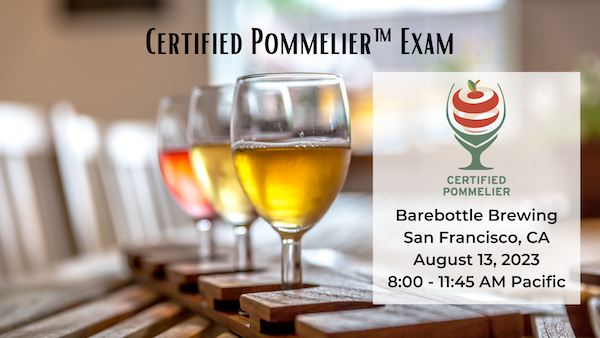
TAKE THE CERTIFIED POMMELIER™ EXAM IN SAN FRANCISCO, CALIFORNIA!
Are you ready to take the next step in your professional development in the cider industry? Already passed the Certified Cider Professional Level 1 Certification and looking for that next challenge? Now’s your chance!
The American Cider Association is pleased to announce that the next Certified Pommelier™ Exam will be held in San Francisco, California! The exam will take place Sunday, August 13, 2023 at Barebottle Brewing, 1525 Cortland Ave, San Francisco, CA 94110.
After the exam you can stick around for a tour and tasting at Barebottle Brewing too!
PREPARING FOR THE CERTIFIED POMMELIER™ EXAM
The Certified Pommelier™ Exam is our second tier of certification and requires in depth study. You must have passed our CCP Level One Certification prior to taking the Certified Pommelier™ Exam. You can purchase a CCP Level One bundle here. (ACA members can find a discount code to purchase the bundle here). The bundle includes an on demand training webinar, a study guide, and two exam attempts.
The ACA has also recently released a Certified Pommelier™ Study Guide that covers the information needed for the theory portion of the exam. It can be purchased here on Amazon.
In addition, several pre-recorded sensory webinars are also available for purchase and can be found here. Please be aware that cider must be purchased separately. Also, be aware that key sensory elements of these ciders may vary from year to year.
Stay tuned for the option to participate in a live sensory analysis webinar this summer prior to the exam in San Francisco. You can check our certification page for the latest news.
WHILE YOU’RE IN SAN FRANCISCO
Why not make it a weekend (or longer) since you’ll be heading to the beautiful Bay Area of California anyway, especially since it’s the weekend of the Gravenstein Apple Fair, which will be celebrating it’s 50th year!
Dry Cider July Launches July First to Showcase Hard Cider with 0g Sugar

The American Cider Association (ACA) is launching Dry Cider July on July First to highlight hard ciders containing zero grams of residual sugar. The Association is encouraging others to join the campaign through social media with the hashtags #dryciderjuly and #pickdrycider. This year the association will be working with their partners at Cider Culture to highlight dry hard ciders throughout the month of July.
The Association’s CEO Michelle McGrath debunks the myth that dry ciders don’t exist, “As cider industry professionals, we hear people asking about less sweet ciders all the time. Luckily, for drinkers looking to monitor their sugar intake or who prefer the flavor of dry ciders, there are literally thousands of options.”
The ACA hosts a dry cidery directory on their website to make finding bone dry hard ciders easier. The directory can be found here on ACA’s website, and is easily sorted to help consumers find no-sugar ciders local to them.
Alcohol is created when yeast converts sugar into alcohol through fermentation. A cider that contains no residual sugar has been fermented to absolute dryness. Sometimes cidermakers will blend a completely dry cider with fresh juice for acid/sugar balance, but other times they leave the cider entirely dry. These dry ciders with zero grams of sugar in the final product are the focus of the Dry Cider July campaign
“The brain has a hard time distinguishing fruity from sweet. Many ciders with absolutely no sugar in them can still be very fruity,” explains McGrath.
The ciders in the Dry Cider Directory reflect the variety of flavors and styles possible. From single varietal ciders showcasing specific apple varieties and served in a 750 ml bottle to ciders aged on rose petals and sage and served in a 12 oz can, the range found in dry ciders is impressive.
Follow the association on their Instagram account @pickcider and on Cider Culture’s Instagram account @ciderculture to learn more about the campaign.
###
Fresh Data Insights Found in Latest Members-Only Cider Market Dashboard

For the lastest 13 week period through May 20, 2023, regional cider brand sales were up 7.2% YOY per NIQ.
Cideries use data talking points like this to make decisions and to pitch retailers, investors and wholesalers. But good data is hard to find and can be cost prohibitive. We have some good news for you though. Cider market data is included in your membership with the American Cider Association–what a great benefit!
The latest 3 Tier Beverages dashboard is now available to ACA members with data current as of May 20, 2023. Explore recent off-premise cider sales trends by state, packaging, style and more.
3 Tier Beverages, in partnership with NIQ, is proud to be the official data supplier of the American Cider Association. Part of this partnership brings you quarterly dashboards with key market data and insights to help you drive your business forward. Should you be interested in more detail on your brands/markets, please reach out to Mary Mills at 3 Tier Beverages.
If you missed our dashboard orientation webinar, you can watch it here.
In addition, there is a Glossary of Attributes available to help you understand the terms used as you progress through the data. You can download the glossary here.
Looking for data for previous time periods? Access our Cider Reports Library here.
We are data nerds here at ACA so please feel free to reach out if you have any questions.
How to Submit Your SKUs to Circana

We want to make sure your cider is accounted for in national sales data. It’s important that every cider is included so we can have an accurate picture of the cider industry and can collect data that you can use when pitching your ciders to wholesalers and retailers around the country. Please submit your new or updated SKUs to Circana today.
Please find below detailed instructions for how to submit new products to Circana (formerly IRI).
Work with your Client Service Consultant to submit image labels. If you are not a Circana client, send images directly to: DCA.ElectronicImage@circana.com.
Submission Guidelines
- New SKU – send images of packaging with UPC on the packaging; Circana does not accept images without clear UPCs.
- If an item is a seasonal/series/rotational, provide packaging with the multiple styles/flavors to Circana. If those packaging images are not available, provide a sell sheet or proof that there are multiple styles/flavors using the same UPC. If you want a specific series name included in the coding, please include the word “series” in the packaging name, otherwise Circana will code as seasonal.
- Image Requirements
- Multi-packs need either a flat-file package image, two images of the front and the side of the package containing the UPC, or a flattened carton to show both front and side with UPC.
- Multi-packs in snap ring/hicone (where individual can/bottle only option for scanning the multi-pack unit). Turn one can/bottle to show the front label and another to show the part with the UPC with both connected through the snap ring/hicone.
- Singles need either the flat-file package/label image or two images of the front and back of the container and a clear image of the UPC code.
- Change Coding on Existing SKUs – send images of packaging and details of attribute(s) you wish to change.
ACA Welcomes New Certified Pommelier™, Industry Veteran Nicole LeGrand Leibon
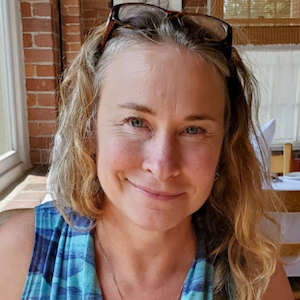
The American Cider Association is thrilled to announce that Nicole LeGrand Leibon has passed the Certified Pommelier™ exam. Deeply experienced in cider, from orchard to package, Nicole has been there for industry growth from its modest beginnings to the juggernaut it is today. Nicole joined Farnum Hill Ciders and Poverty Lane Orchards in 2000, where she helped create a style that honored the terroir and the fruit, while gaining renown for the best ciders in America. In 2018, while finishing her 19th harvest at Farnum Hill Ciders, Nicole went on to expand her skills to distilling. She became the Assistant Distiller at SILO Distillery in Windsor, VT, as well as Head Cidermaker. Currently, Nicole is the cider blend consultant, LeNose Knows and a board member for the Cider Institute of North America (CINA). Nicole is the first person from Vermont to become a Certified Pommelier™.
The Certified Pommelier™ certification was developed to move beyond a fundamental understanding and to encourage cider professionals to think critically while demonstrating a higher understanding of the elements of cider. The rigorous test consists of five types of questions: short answer, fill in the blank, matching, essay and blind sensory (based on tasting).
While the Certified Pommelier™ exam is designed to be challenging, the ACA is dedicated to making sure all of the information tested on is accessible for all who desire to learn. To that end, the ACA recently announced the release of their new textbook to help candidates prepare to take the exam with just one resource. Those interested in preparing for the exam can purchase the new textbook through Kindle Direct Publishing. In addition, sensory analysis practice webinars and a Facebook study group are continually being updated with resources for candidates studying for the exam. Links to all CCP resources can be found on the ACA’s website.
The ACA has recently announced several new sensory analysis webinars and exams for those interested in pursuing their Certified Pommelier™ designation. Upcoming events include:
- July 26: Live Sensory Analysis Webinar with Alma Cider
- August 13: Certified Pommelier™ Exam in San Francisco, CA
- October 24: Certified Pommelier™ Exam in Asheville, North Carolina
- November: Date TBD Sensory Analysis Webinar with Haykin Cider
- January 17: Certified Pommelier™ Exam at CiderCon® 2024
Contact the ACA’s Education Operations Manager Jennie Dorsey if you have questions about the Certified Cider Professional program or are interested in taking either the Level 1 or Certified Pommelier™ exams. You can also learn more at https://ciderassociation.org/certification.
###
New Item Coding for UPCs with NIQ

We want to make sure your cider is accounted for in national sales data. It’s important every cider is included so we can have an accurate picture of the cider industry and collect data that you can use when pitching your ciders to wholesalers and retailers around the country.
Please find below detailed instructions for how to submit new products to NIQ (formerly Nielsen).
To get NEW UPCs added:
- Fill out the NPC 2023 Form.
- Send both the form and correct photos (see below for photo guidelines) to Mary Mills at 3 Tier Beverages and she and her team will make sure everything is good to go for NIQ. She recommends uploading images to a shared drive (Dropbox or Google Drive) in order to preserve image quality.
Photo Guidelines:
Below is an in-depth photo guideline to follow when submitting photos to NIQ to get new UPCs coded or current ones updated.
Nielsen accepts 2 types of photos:
- 3D: Photos of the real 3D item.
- Flat: 2D photos of the label/box.
Nielsen is VERY PARTICULAR about the photos needed so below are the guidelines to follow. The images needed are described below, flat photos are best if you have them. If not, please send images of the actual item. For either type of photos you choose to submit, Nielsen requires photos of:
- Clear images of all 6 sides, including top & bottom of the individual product
- Clear images of all 6 sides, including top & bottom of the packs (2/4/6/12pk/etc) are needed if they are not sold individually
- Make sure photos are in jpeg format or else they will NOT be accepted
- They need to be clear, have a neutral background, and high resolution so no blurring when zoomed in
- Professional photos are not required
Click here to view photo examples for both 3-D and Flat.
Have questions? Email our NIQ contact Ryan Sisto.
Urge Congress to Support the USPS Shipping Equity Act
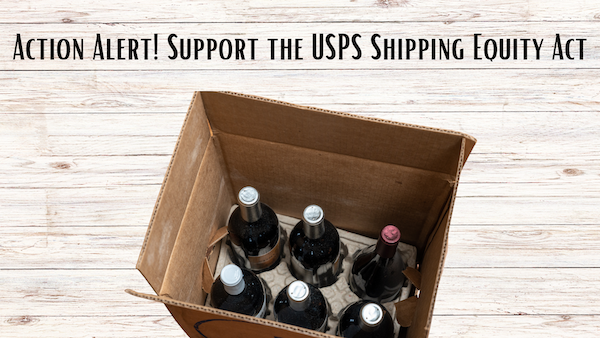
On May 23 Rep. Dan Newhouse (R-WA) once again introduced the USPS Shipping Equity Act in Congress alongside Rep. Jennifer Wexton (D-VA) and 8 other House co-sponsors. Currently, the U.S. Postal Service is not allowed to ship cider, beer, wine, or distilled spirits, because of a leftover, outdated ban put into effect during the Prohibition era. The USPS Shipping Equity Act would give parity to the US Postal Service, allowing it to ship licensed alcohol for commerce just like FedEex or UPS. Additionally, the USPS Shipping Equity Act gives rural producers access to another option for shipping alcoholic beverages. This bill is critical in leveling the playing field and increasing consumer and manufacturer choice while bringing in millions of dollars in revenue per year that will support small businesses, rural communities, agricultural enterprises and the US Postal Service.
We encourage you to email your Congressional representatives and urge them to cosponsor the USPS Shipping Equity Act. We have set up a campaign with an email template that you can use. Click the button below to be taken to the campaign. After you’ve emailed your reps, we encourage you to take a moment to share your actions on social media and via email to inspire others to reach out to their representatives as well.
Have questions? Please email ACA CEO Michelle McGrath.
Celebrate World Cider Day on June 3!
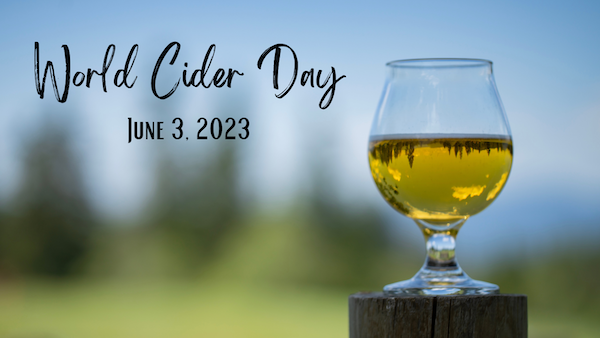
Saturday, June 3, 2023 is World Cider Day! We hope you’ll join us in the international declaration of love for the beverage we all hold dear. Whether you’re sipping on a crisp apple driven cider or a unique botanical cider, take a moment to snap a photo and share it on your social channels this Saturday. Posting about your favorite cider can help raise awareness about this beautiful beverage and also gives you a chance to connect with other cider enthusiasts and cidermakers around the globe. Show your support for cidermakers and small businesses, and join the conversation using the hashtags #WorldCiderDay and #WCD2023 and tag us @pickcider. Let’s raise a glass to cider and cheers to a great day!
A Little History on World Cider Day
World Cider Day was launched by the members of the Association of Apple Wine and Fruit Juice Press Houses in Hesse, Germany in 2013 to promote cider and the meadow orchards in the region. Since then it has been embraced by cideries, bars, restaurants, cider associations and cider lovers all over the world. Learn more and find resources on the World Cider Day website.
New ACA Member Benefits!

We’re excited to share some new ACA member benefits with you this spring. Read on to learn more about our brand new resource hub, the new 3 Tier Beverages dashboard just released with Nielsen Q1 2023 data, and a free Crafted for All account now available to all members.
Resource Hub
We’re so excited to share that our new digital Resource Hub is now live! The resource hub is exclusively for ACA members and is filled with items useful for cider businesses of all sizes. The resource hub already includes a wealth of information and members can expect a quarterly release of new resources and will be notified via email when these updates occur.
Nielsen Q1 2023 Data on New 3 Tier Beverages Dashboard
3 Tier Beverages, in partnership with NielsenIQ, is proud to be the official data supplier of the American Cider Association. Part of this partnership brings you quarterly dashboards with key market data and insights to help you drive your business forward. The first dashboard is now available with data through Q1 2023 (3/25/23).
Crafted for All Account
We’ve had the privilege of working with Dr. J Nikol Jackson-Beckham and her organization Crafted for All for several years now and we’re so pleased to be able to expand our partnership and offer all ACA members the opportunity to create an account with Crafted for All where you’ll find a wealth of resources.


